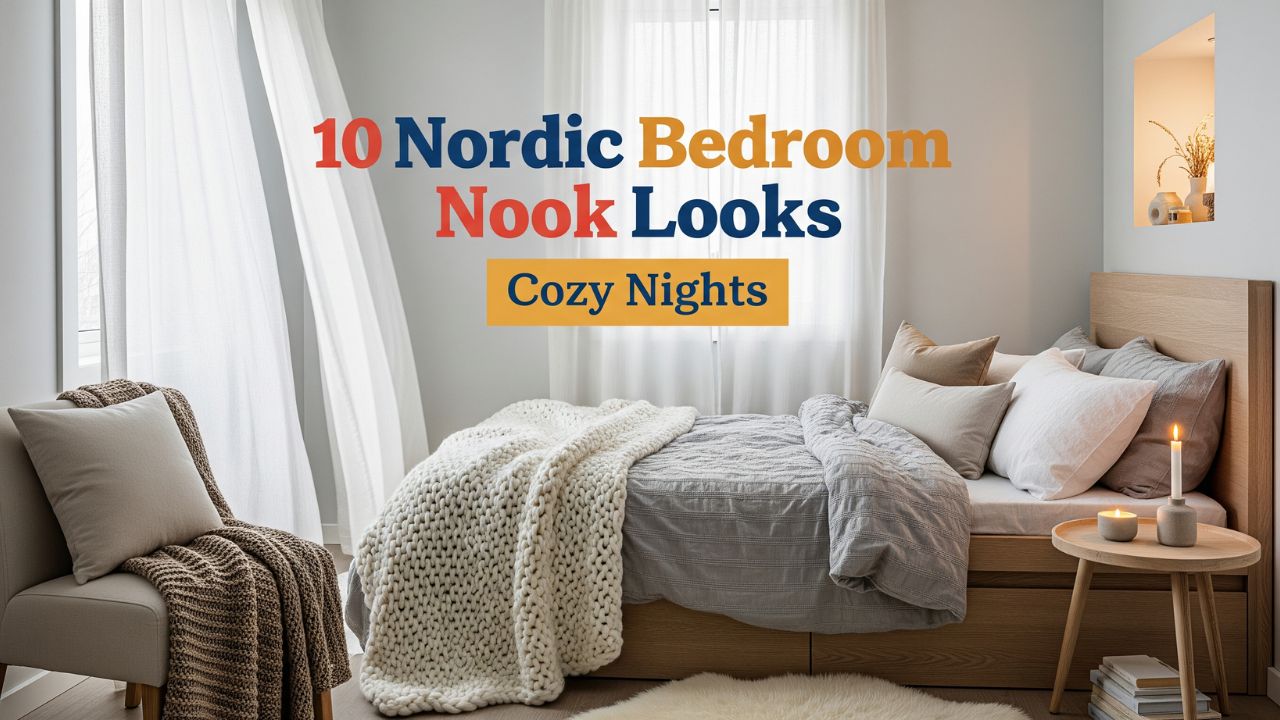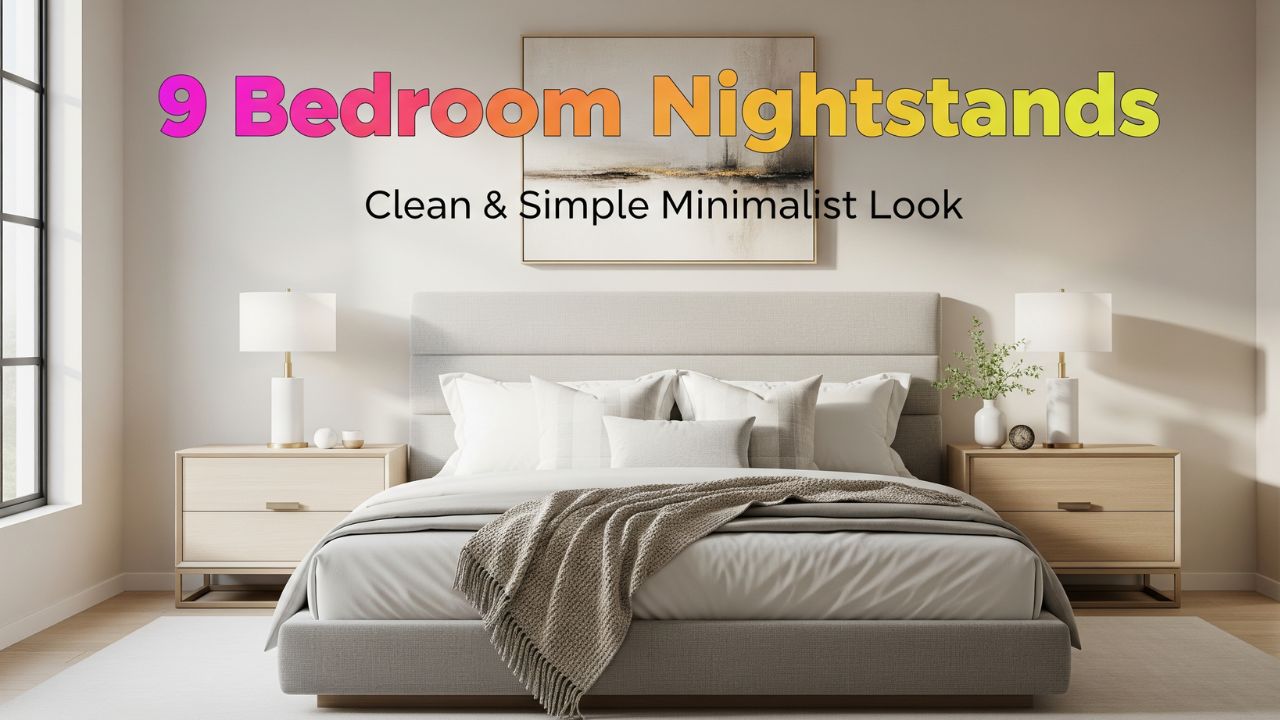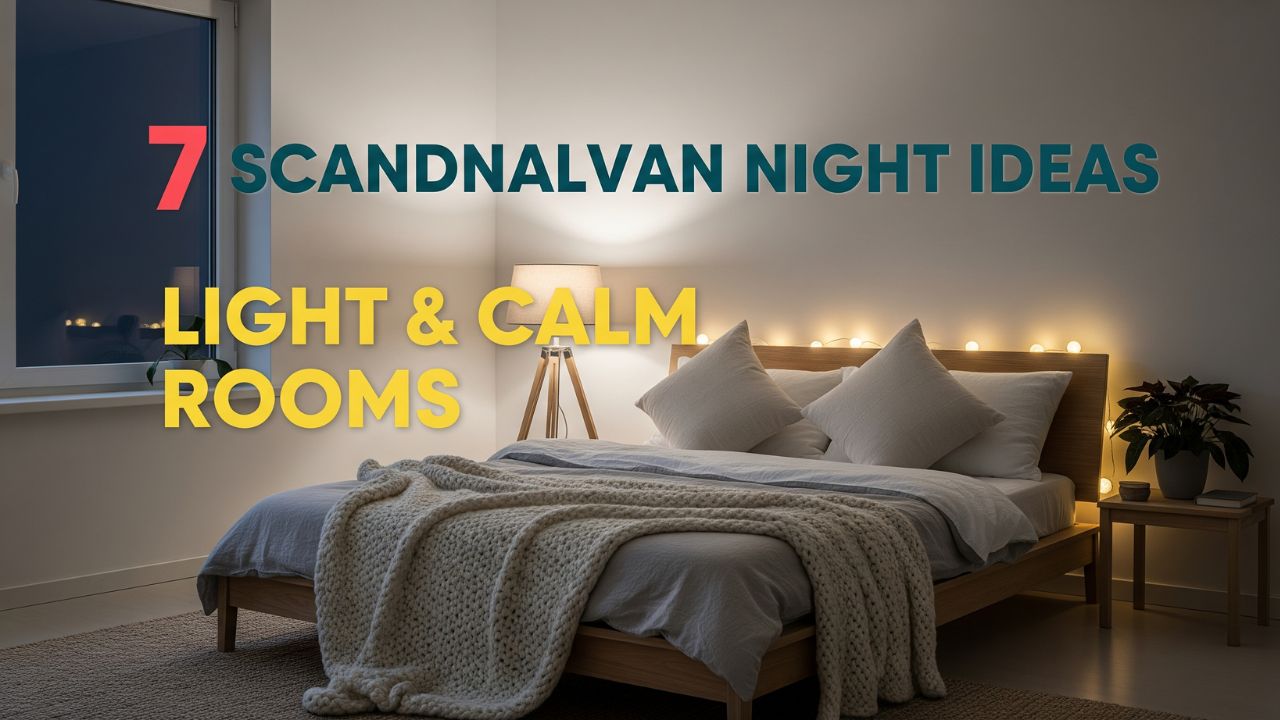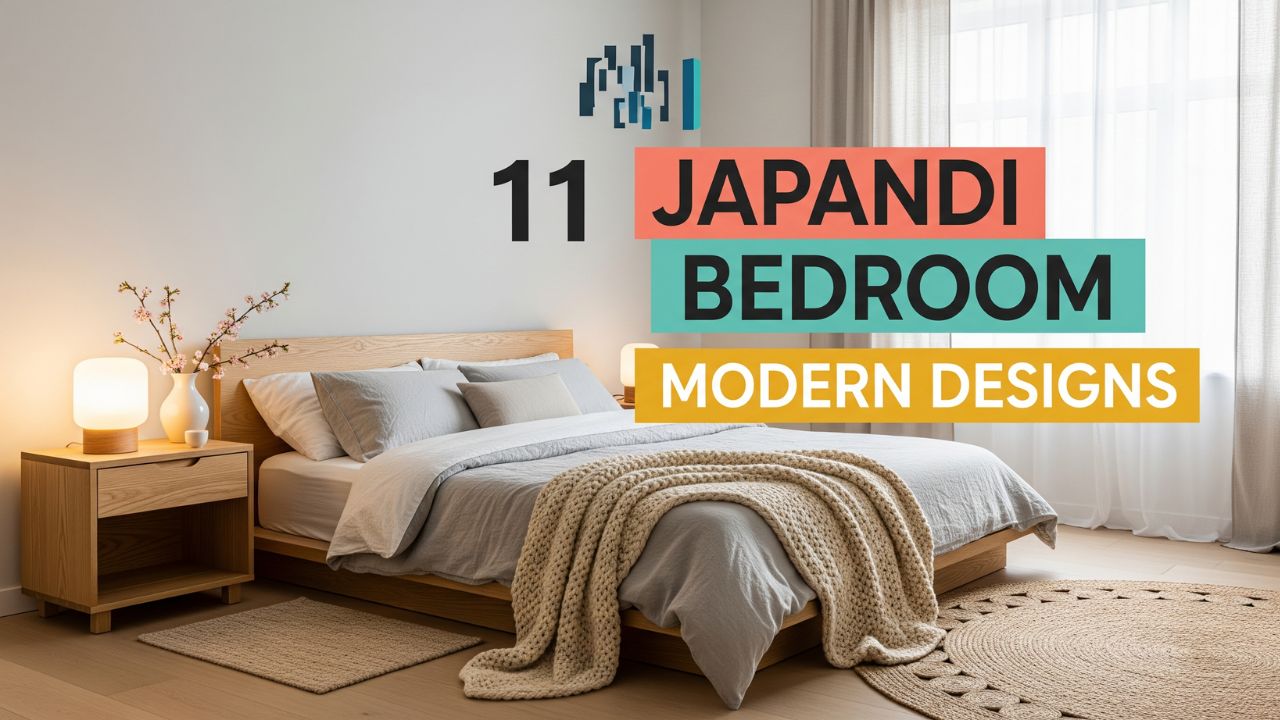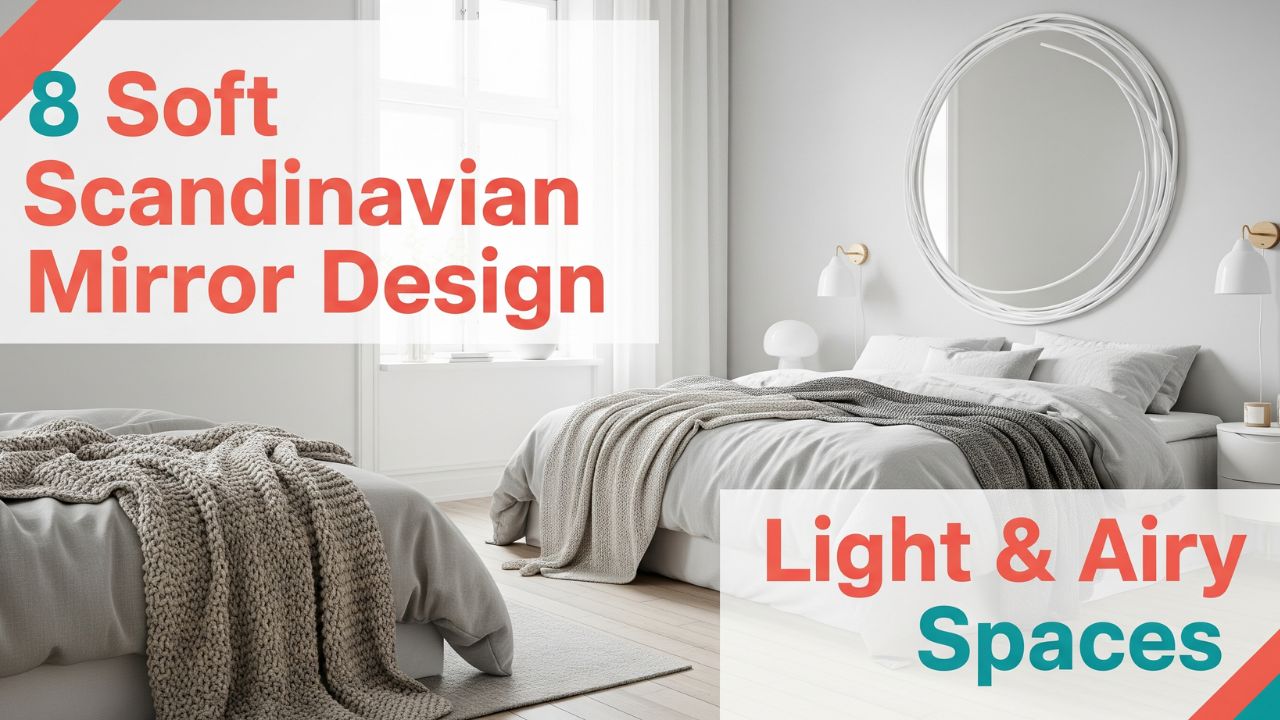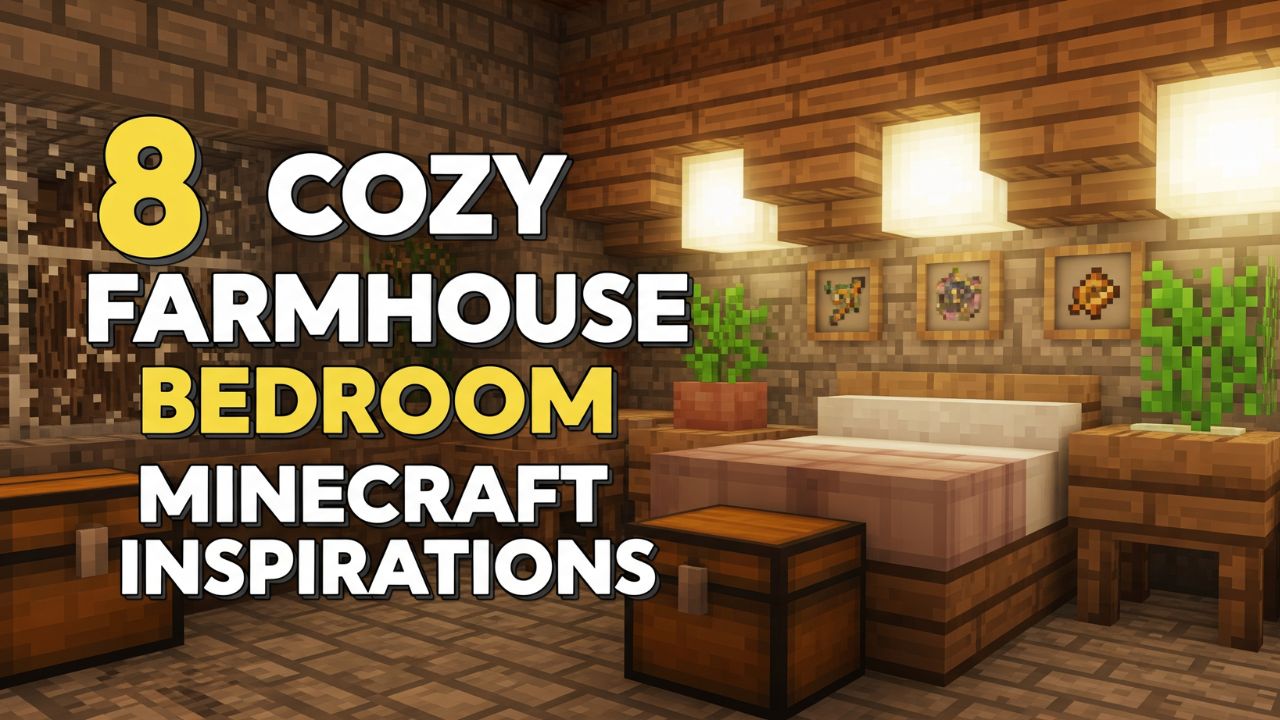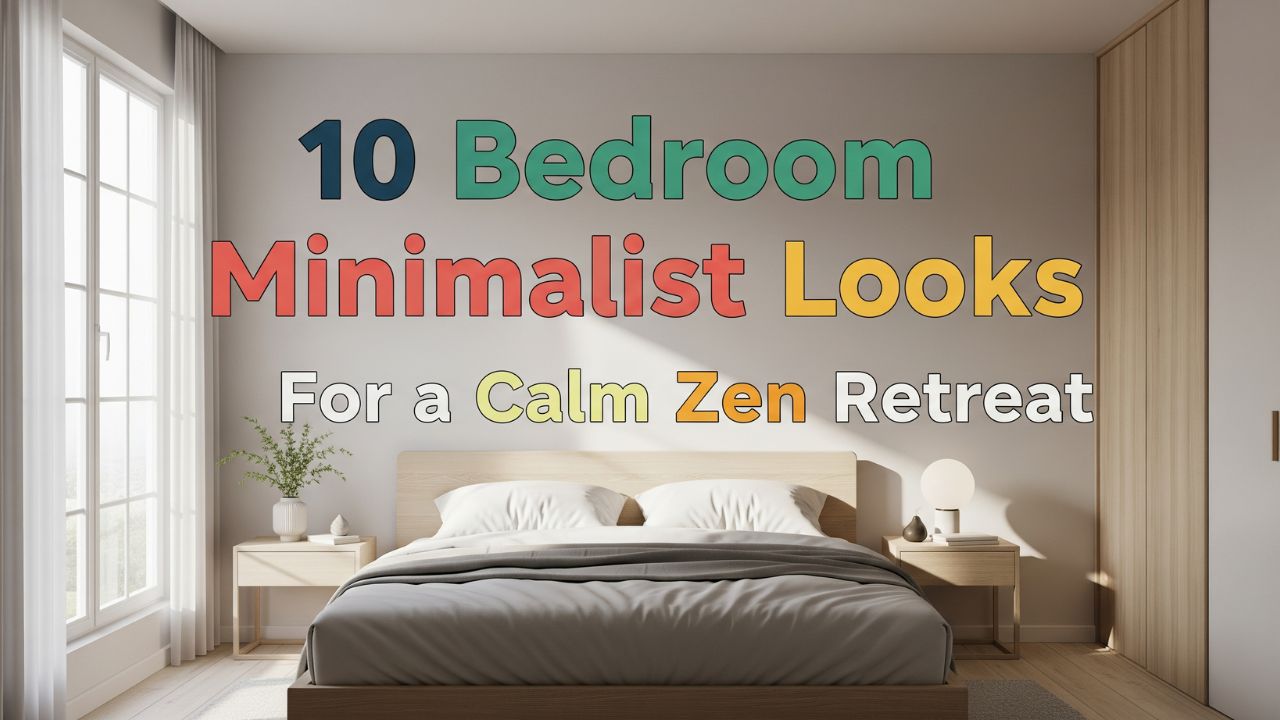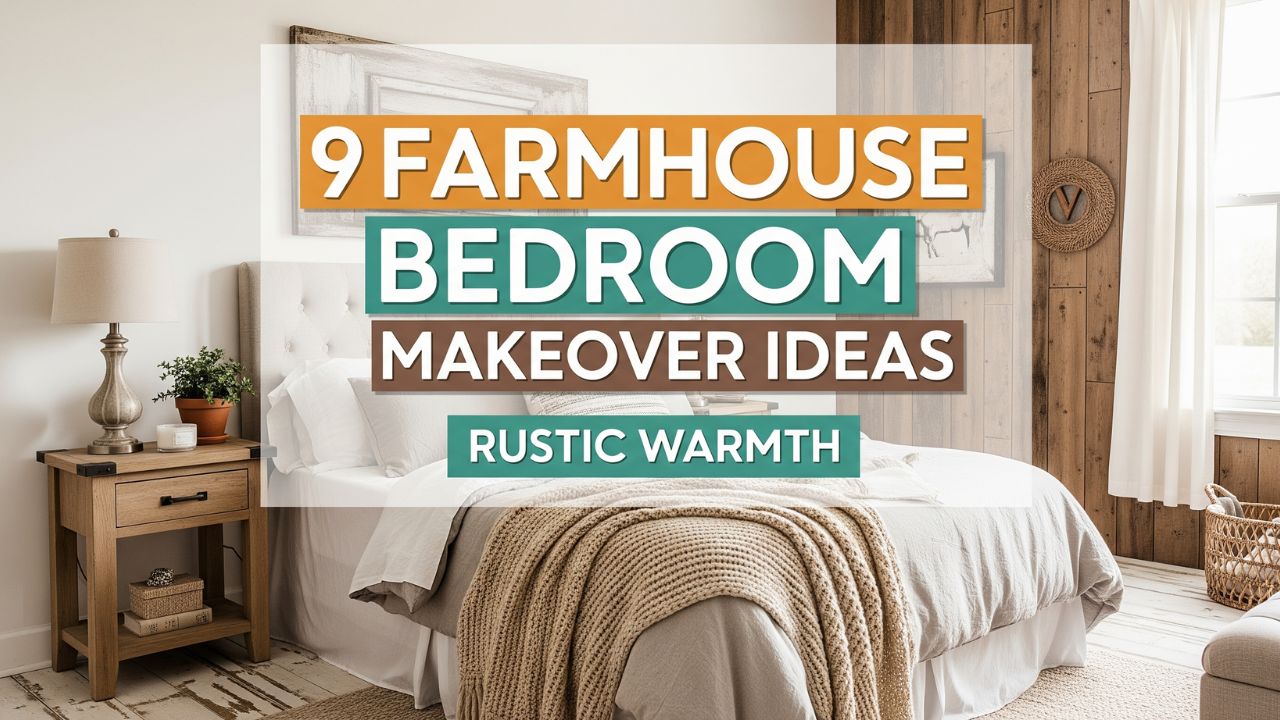They say first impressions matter—and when it comes to your home, the living room usually sets the stage. Yet, many people overlook one of the most powerful design tools in their arsenal: the accent wall.
Imagine walking into a room where just one wall transforms the entire atmosphere, whether it’s through texture, color, or bold design. That single element can dictate mood, elevate style, and even spark conversation.
Do you know? Ancient civilizations often used focal walls decorated with murals or carvings to signify importance and hierarchy in a space. Fast forward to today, accent walls continue that tradition—only now, they serve as a statement of personal taste and creativity.
If you’ve ever wondered how to make your living room feel unique without overhauling everything, an accent wall is your best ally. Here are 16 creative ways to turn a simple wall into the centerpiece of your home.
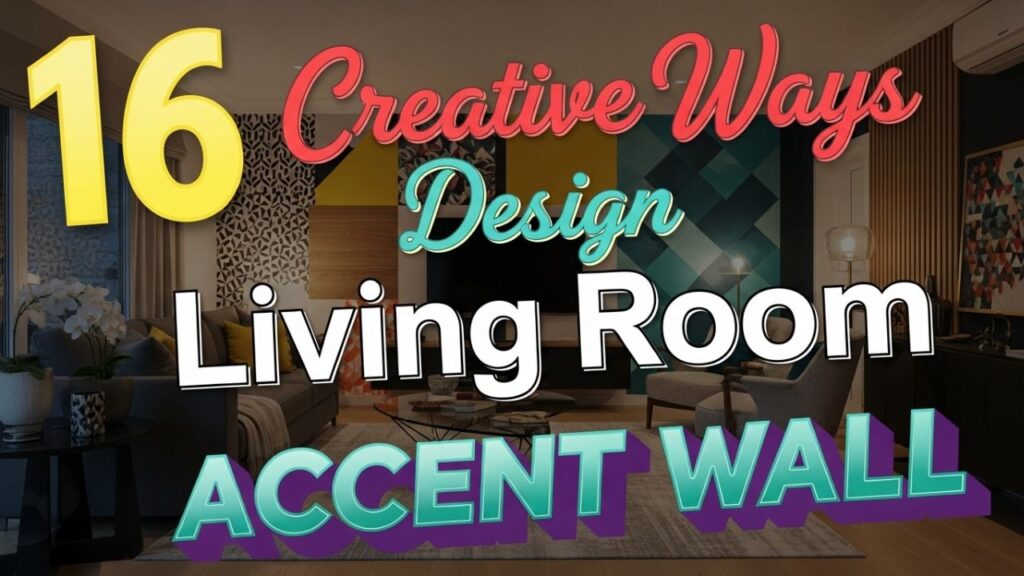
Table of Contents
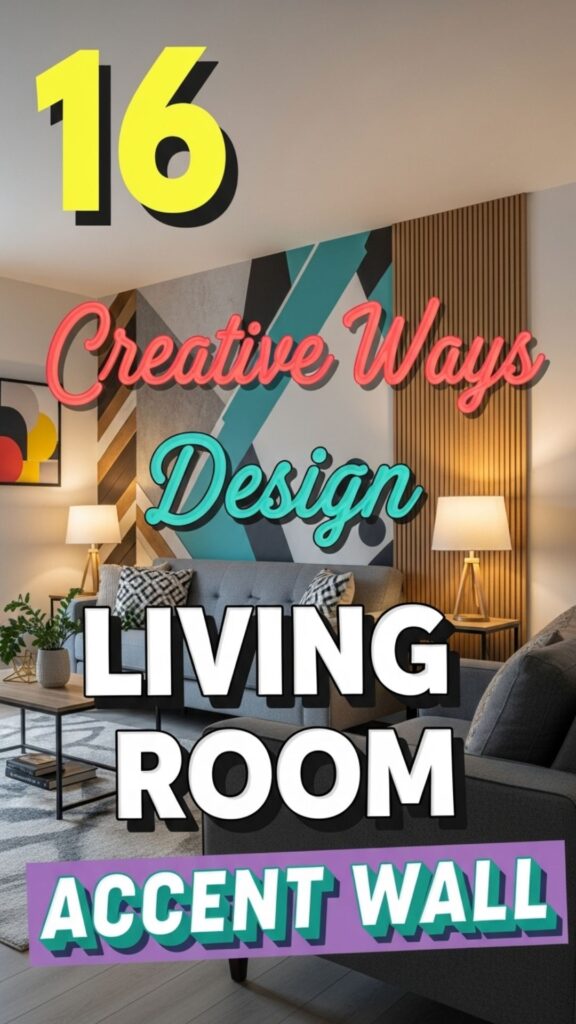
16 Ways To Design Living Room Accent Wall
1. Bold Paint Colors That Pop
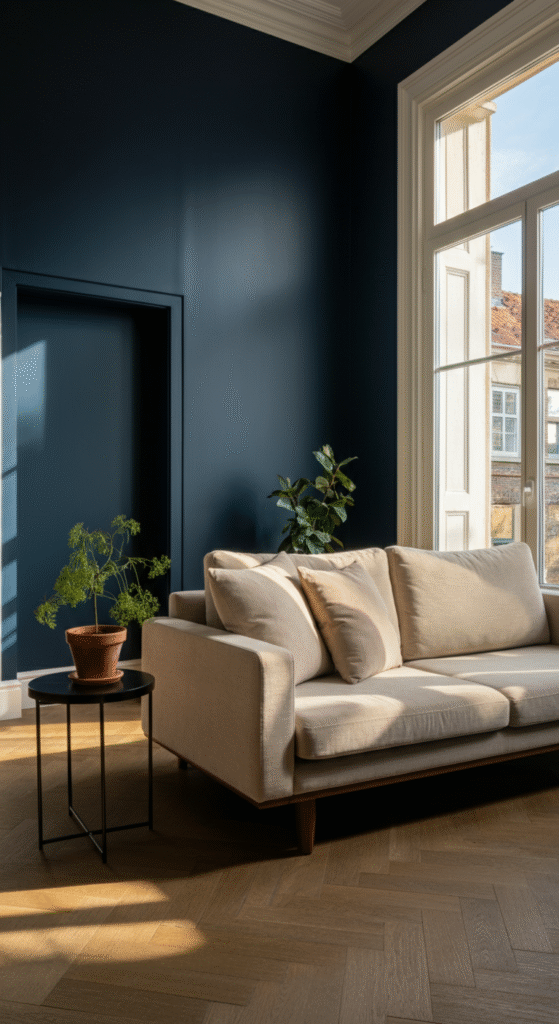
Sometimes, the simplest option is the most striking. Choosing a bold paint color—like deep navy, emerald green, or burnt orange—instantly adds energy to your living room.
Interesting fact: Studies show that colors can influence mood. Blue often promotes calm, while red boosts energy levels. By strategically choosing your accent wall color, you’re not just decorating—you’re shaping emotions.
2. Geometric Patterns for Modern Edge

Add depth and drama with geometric shapes. Triangles, chevrons, and hexagons painted or wallpapered onto a wall can make a living room feel more dynamic.
Myth-buster: Many people think geometric designs only work in ultra-modern homes. In reality, softer patterns and muted palettes can suit even the coziest, rustic spaces.
3. Wood Paneling for Warmth
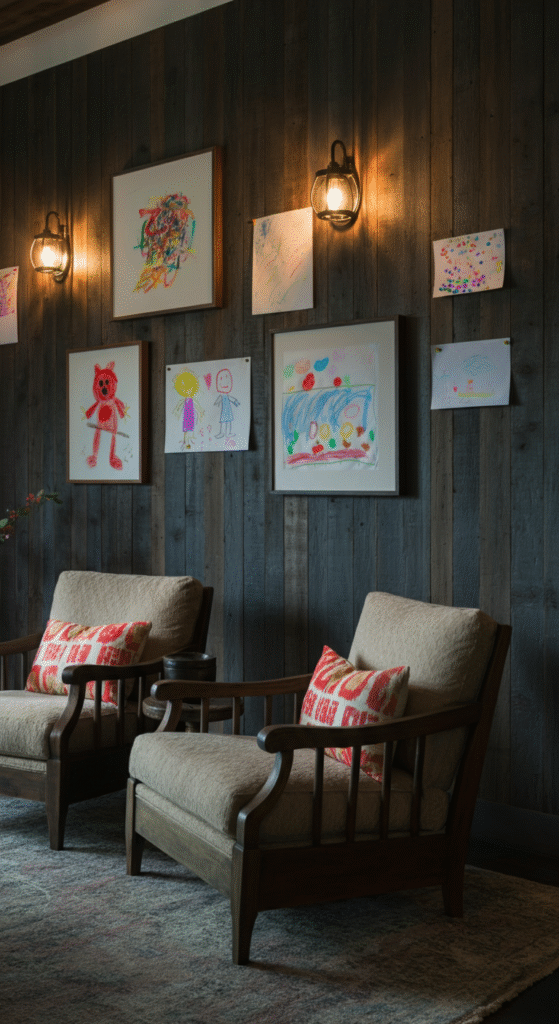
Nothing brings warmth like wood. Whether reclaimed barnwood, shiplap, or sleek walnut panels, wood textures add character and coziness. This is especially effective in open-plan spaces, where the wood wall helps define the living area.
Did you know? Shiplap became popular in historic homes for practical reasons—its overlapping boards helped with insulation. Today, it’s purely an aesthetic choice, but one with deep roots.
4. Brick or Stone for Industrial Charm
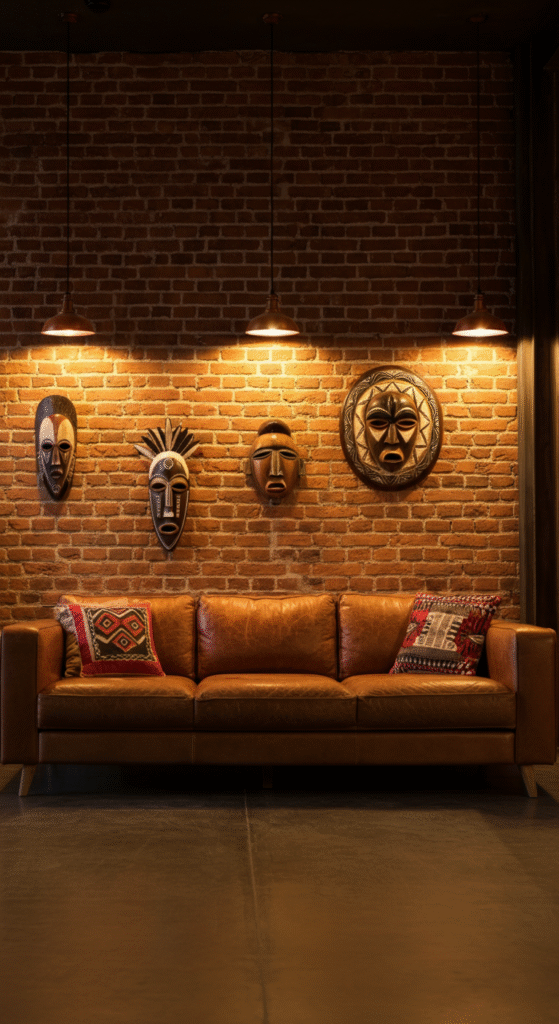
Exposed brick or stone gives a raw, organic feel. It’s perfect if you want a loft-style or industrial vibe. Even if your home doesn’t have original brick, faux panels are a cost-effective alternative.
Tip: Pair stone or brick with soft furnishings—like plush rugs or linen curtains—to balance rough textures with comfort.
5. Wallpaper With Personality
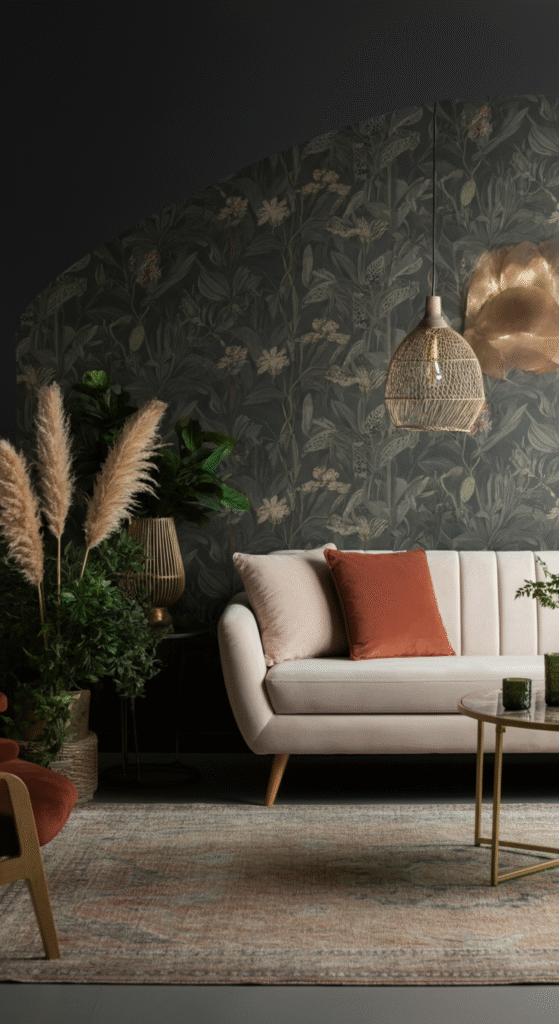
Gone are the days when wallpaper was fussy. Today’s designs range from tropical botanicals to metallic abstracts. A bold wallpapered wall can be an instant focal point, especially behind a sofa or TV unit.
Interesting fact: Wallpaper dates back to the 16th century, when it was hand-painted and reserved for the elite. Now, peel-and-stick options make it accessible to everyone.
6. Gallery Wall of Art and Photography
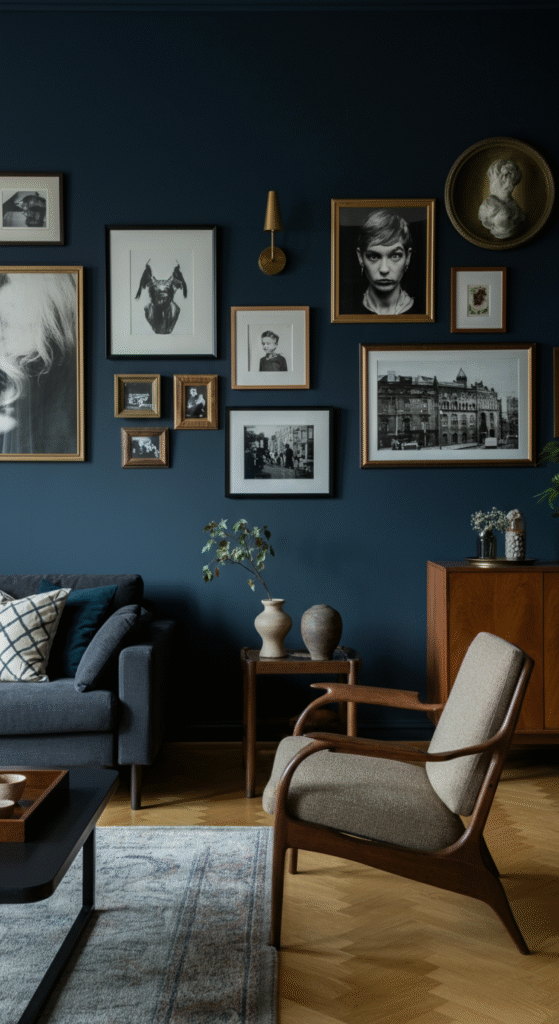
An accent wall doesn’t always have to rely on texture or color. A curated gallery wall of paintings, prints, or family photos can be equally powerful.
Pro tip: Stick to a theme—like black-and-white photography or abstract art—for a cohesive look, rather than random mismatched frames.
7. Murals and Hand-Painted Masterpieces
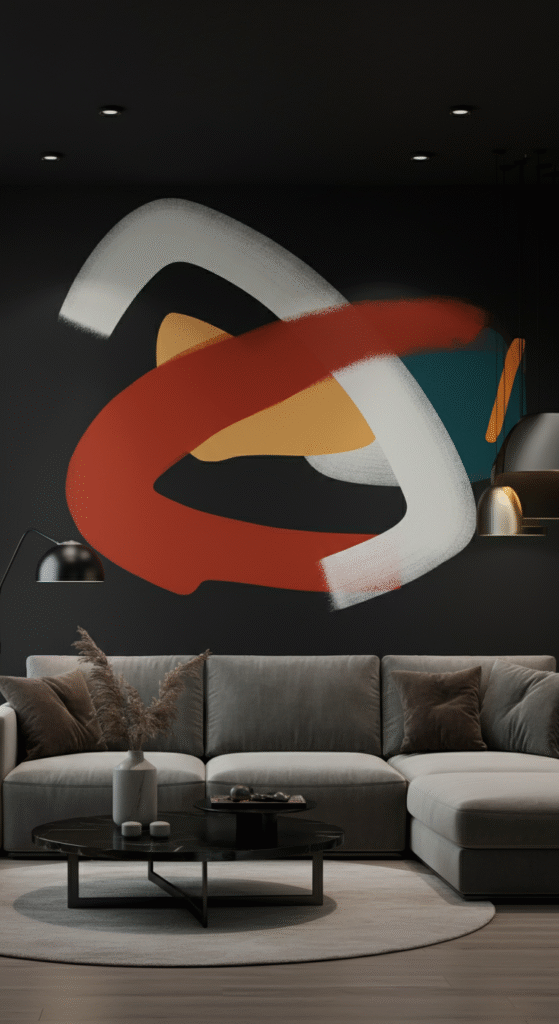
For the bold at heart, a mural transforms a wall into a canvas. Whether it’s a landscape, abstract splash, or custom design, murals make the living room unforgettable.
Did you know? Murals have been around since prehistoric cave paintings—proof that humans have always loved telling stories on walls.
8. Built-In Shelving Accent
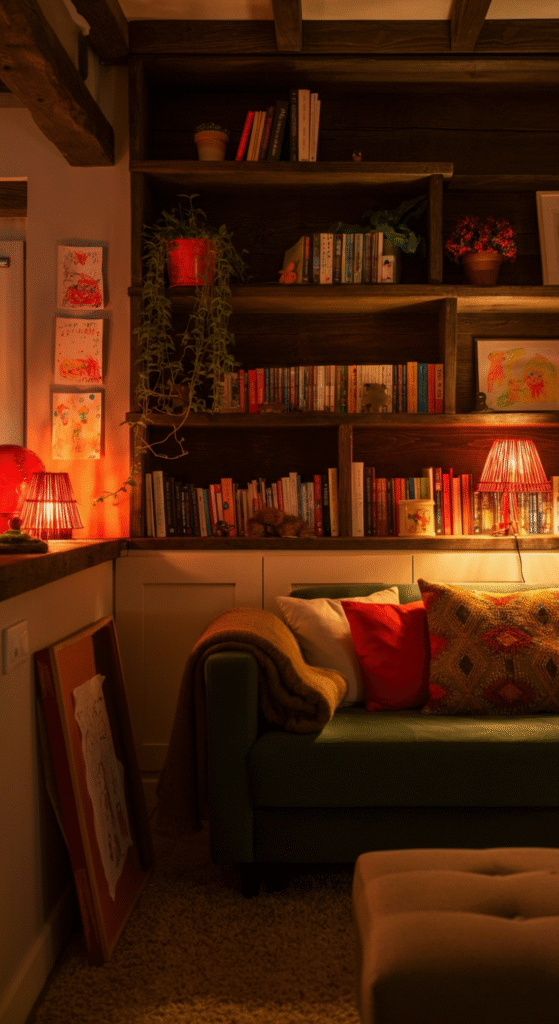
Why not make your accent wall functional? Built-in shelves filled with books, plants, and décor add depth while maximizing storage. It’s an especially smart solution for smaller living rooms.
Myth: Built-ins are only for luxury homes. With clever DIY designs and modular systems, they can be affordable and stylish for any budget.
9. Mirrors for Light and Space
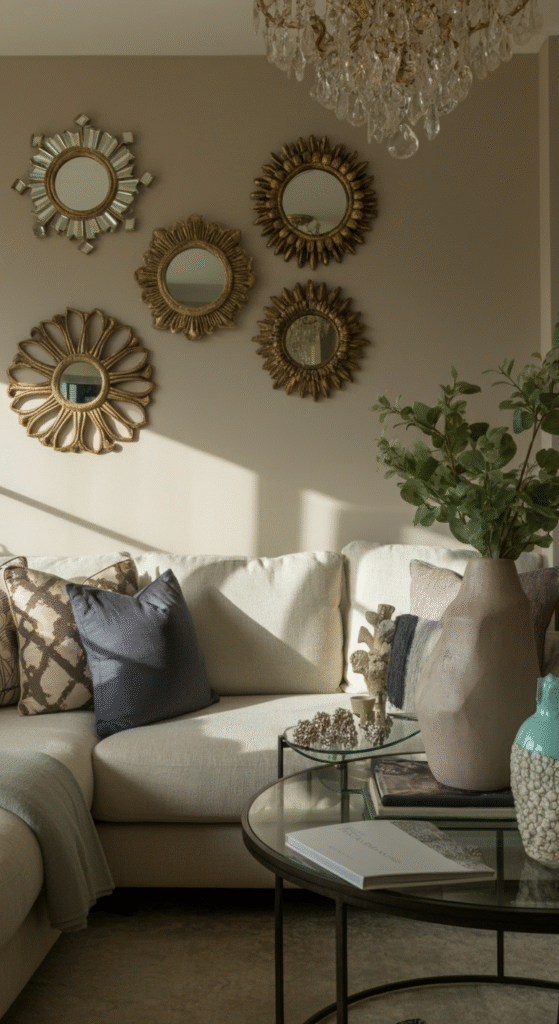
Mirrors aren’t just practical—they’re transformative. A mirrored accent wall can make a small living room feel twice its size and reflect natural light beautifully.
Fact: In feng shui, mirrors are considered powerful tools to expand energy and bring balance to a room.
10. Fabric or Upholstered Panels

Soft textures like fabric or leather panels create a luxurious feel. This design is ideal for cozy, intimate living rooms or spaces where acoustics matter, since fabric can help reduce echo.
Tip: Neutral fabrics like beige or gray offer subtle elegance, while velvet in jewel tones screams sophistication.
11. Metallic Accents for Glamour
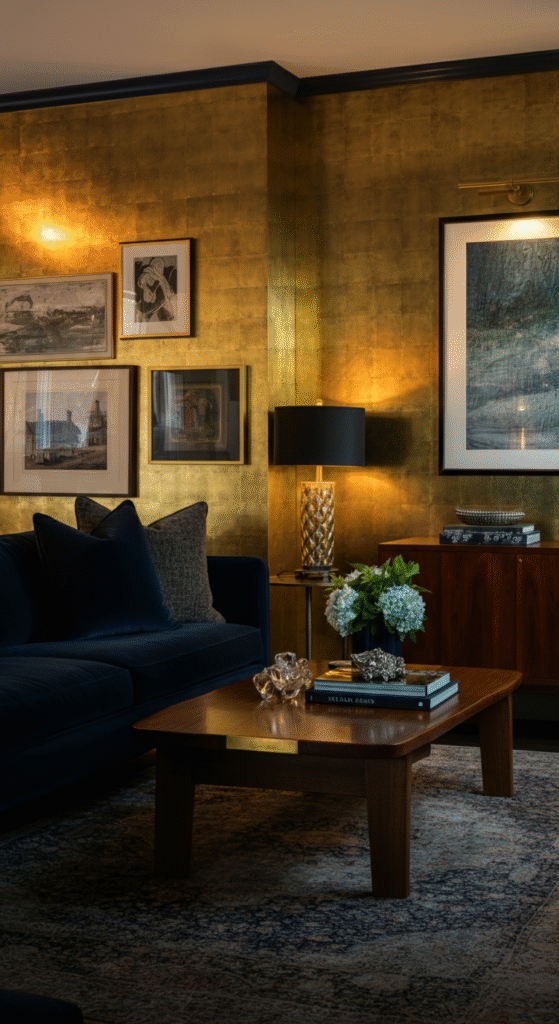
Think gold leaf, metallic paint, or shimmering wallpaper. Metallic finishes on a feature wall reflect light and create a sense of opulence.
Do you know? Gold leaf has been used in architecture for centuries, from Egyptian tombs to Renaissance churches, to symbolize wealth and divinity.
12. Vertical Gardens and Green Walls
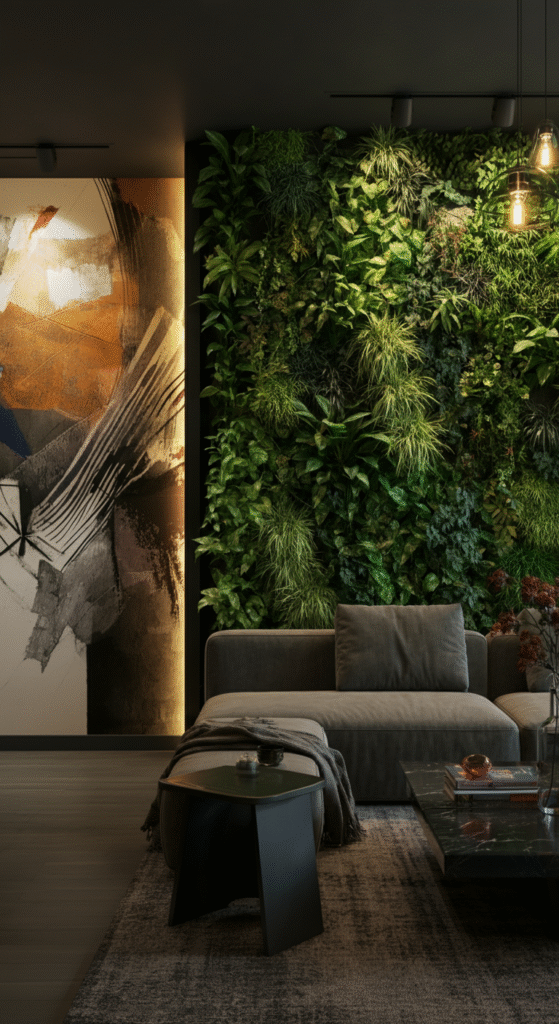
Bring nature indoors with a living wall. Whether real plants or realistic artificial greenery, a vertical garden creates freshness and calm.
Fact: NASA once conducted a study showing that indoor plants can help purify air—a living wall doesn’t just look great, it can also improve well-being.
13. Tile Accents for a Unique Twist
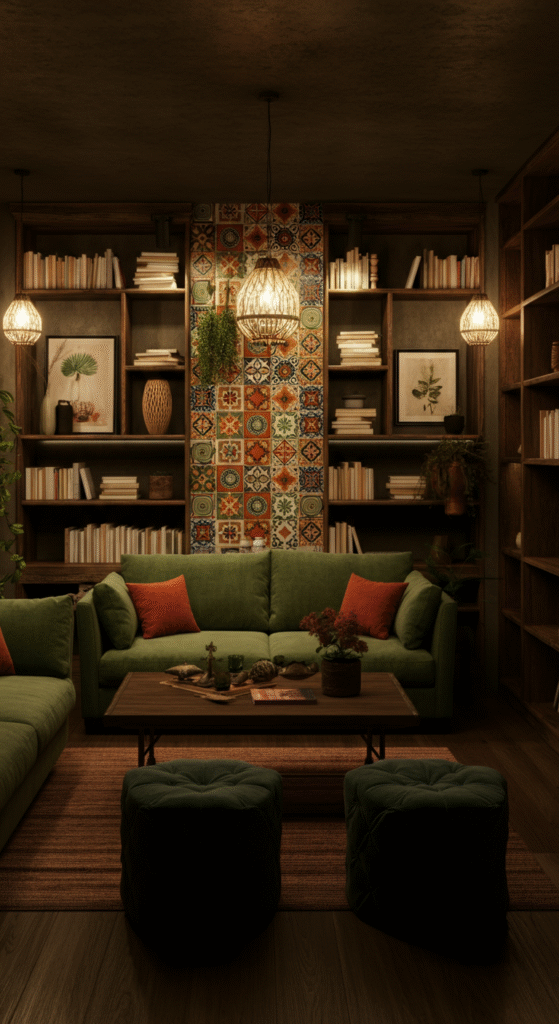
Tiles aren’t just for kitchens and bathrooms. Ceramic or mosaic tiles on a living room wall bring texture, shine, and pattern into play. This is especially effective in Mediterranean- or Moroccan-inspired interiors.
Myth: Tiles are cold and clinical. With the right design—think hand-painted or patterned tiles—they add warmth and artistry.
14. Lighting as a Wall Feature
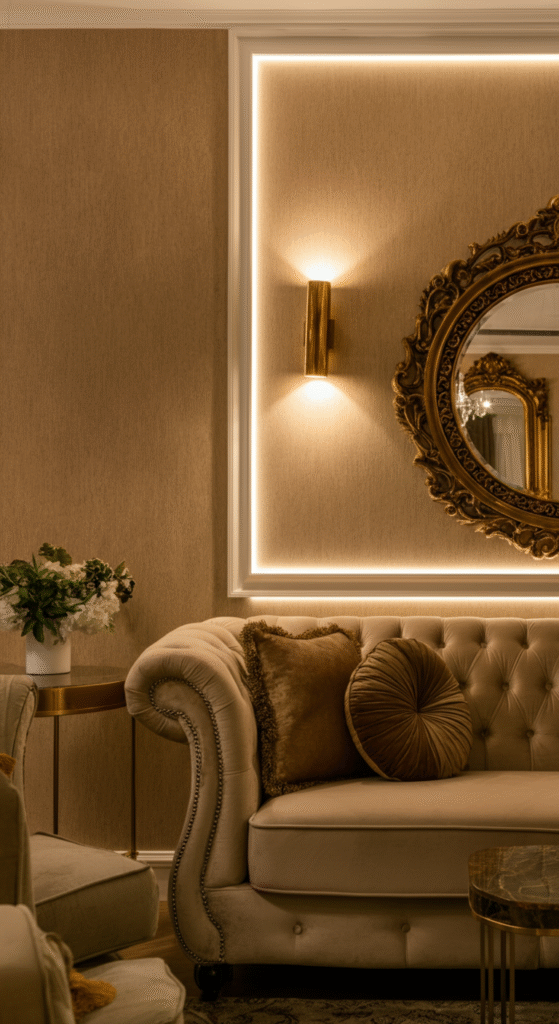
An accent wall can be defined by how it’s lit. LED strips, wall sconces, or even dramatic pendant lights shining against a textured surface add theatrical flair.
Tip: Layer lighting with dimmers to shift between cozy evenings and vibrant gatherings.
15. Color Blocking for a Playful Look
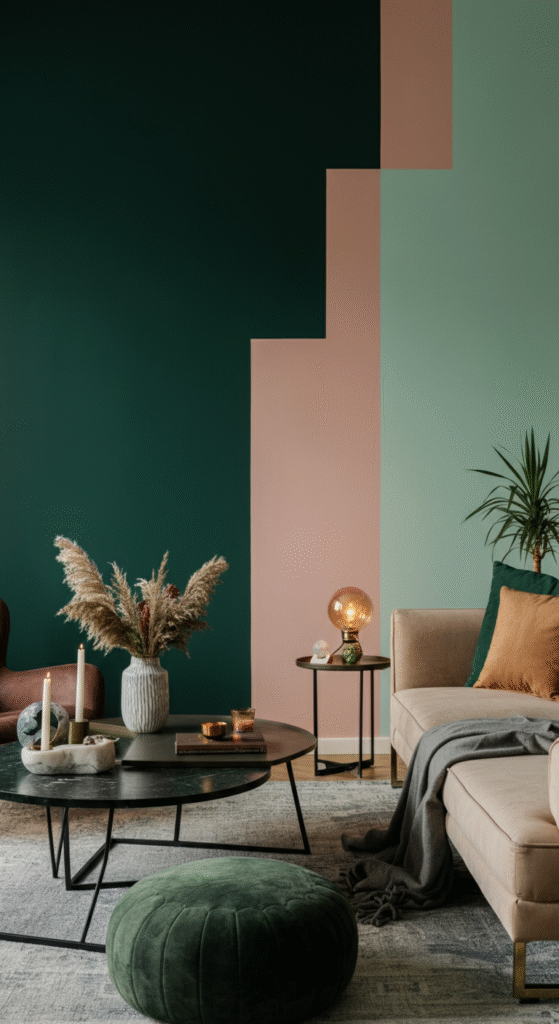
Instead of one bold color, try dividing your wall into blocks of contrasting shades. This works especially well in modern or eclectic living rooms.
Do you know? Color blocking started in fashion during the 1960s, inspired by artists like Piet Mondrian. It’s now a cross-disciplinary trend seen in both clothing and interior design.
16. Minimalist White With Texture
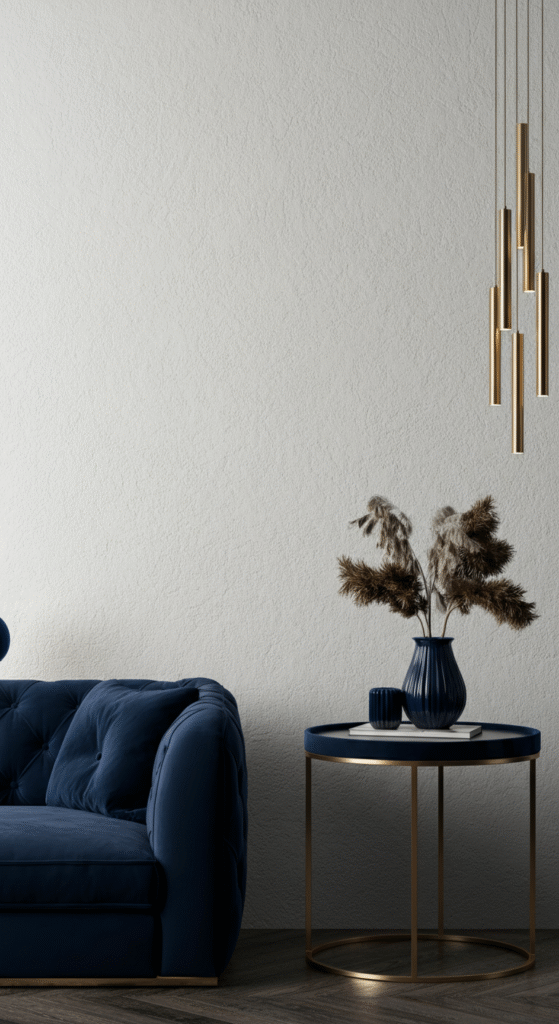
Sometimes less is more. A white wall can still be an accent if you add texture—think 3D panels, subtle plaster finishes, or limewash. This approach keeps the room light and airy, while still adding intrigue.
Fact: Limewash has been used for centuries as a natural wall finish. It’s breathable, eco-friendly, and now making a huge comeback in interior design.
Conclusion: Your Accent Wall, Your Story
An accent wall is more than just a decorative flourish—it’s a reflection of your personality and lifestyle. Whether you love the rustic feel of reclaimed wood, the bold drama of geometric patterns, or the serene beauty of a vertical garden, there’s no wrong way to create one.
The key is to let your wall tell a story. From ancient murals to modern wallpapers, people have always sought to make their living spaces more meaningful through design. So next time you think your living room needs a refresh, remember: you don’t have to redo the whole space. Sometimes, all it takes is one wall to make all the difference.
Frequently Asked Questions (FAQs)
What is the purpose of an accent wall?
An accent wall creates a focal point in a room, drawing attention and adding depth without overwhelming the entire space. It’s a design trick to highlight your style while keeping balance in the overall room design.
Which wall should be the accent wall in a living room?
The best accent wall is usually the one you naturally see first when entering the room—often behind a sofa, fireplace, or TV unit. Choose a wall that already feels like a natural centerpiece.
Are accent walls still in style?
Yes! Accent walls remain popular because they are versatile. Trends may shift—from bold colors to textured finishes—but the concept of a feature wall never goes out of style.
Can small living rooms have accent walls?
Absolutely. In fact, accent walls can make small spaces feel bigger when done right. For example, mirrors, light-colored paint, or vertical stripes can add the illusion of space.
Should an accent wall be darker or lighter?
Both options work, depending on your goal. Darker tones add drama and coziness, while lighter shades open up a room. Think about how you want the space to feel before choosing.
